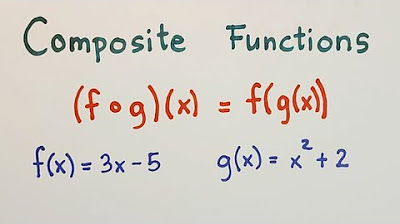📈Gráfica, Dominio y Rango FUNCIÓN LINEAL | Juliana la Profe
Summary
TLDRIn this video, the presenter explains how to determine the domain and range of linear functions using two examples: f(x) = 2x - 1 and f(x) = 3x + 2. Through a step-by-step approach, viewers learn to create value tables for x and y, visualize graphs, and understand that the domain and range for linear functions encompass all real numbers. The explanation emphasizes the consistency of outputs for any input x, ultimately reinforcing the concept that both the domain and range of linear functions are expressed as all real numbers.
Please replace the link and try again.
Q & A
What is the function given in the first exercise?
-The function given is F(x) = 2x - 1.
How do you determine the values of y for specific x values?
-You substitute the x values into the function. For example, when x = 0, y = 2(0) - 1 = -1.
What is the domain of a linear function?
-The domain of a linear function is all real numbers, expressed as (-∞, ∞).
What does 'range' refer to in the context of functions?
-The range refers to all possible values that the output (y) can take based on the input (x).
How is the range determined for the function F(x) = 2x - 1?
-The range is determined by expressing x in terms of y. The range for this function is also all real numbers, expressed as (-∞, ∞).
What is the importance of creating a table of values when analyzing a function?
-Creating a table of values helps visualize the relationship between x and y and confirm the function's behavior.
What function is introduced in the second example?
-The second function introduced is F(x) = 3x + 2.
What values are calculated when x is substituted in the function F(x) = 3x + 2?
-For x = 0, y = 2; for x = 1, y = 5; for x = -1, y = -1.
What does it mean for the domain and range to be all real numbers?
-It means that for any real number input, there will be a corresponding real number output.
What notation is used to express the domain and range in interval form?
-The domain and range are expressed in interval notation as (-∞, ∞).
Outlines

This section is available to paid users only. Please upgrade to access this part.
Upgrade NowMindmap

This section is available to paid users only. Please upgrade to access this part.
Upgrade NowKeywords

This section is available to paid users only. Please upgrade to access this part.
Upgrade NowHighlights

This section is available to paid users only. Please upgrade to access this part.
Upgrade NowTranscripts

This section is available to paid users only. Please upgrade to access this part.
Upgrade Now5.0 / 5 (0 votes)





